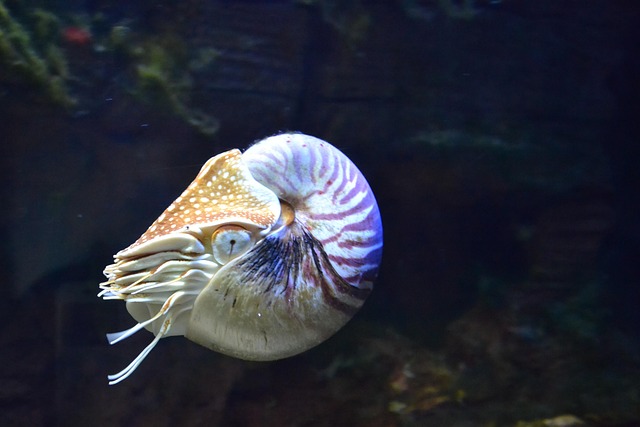Both saltwater and freshwater aquariums utilize glass containers but differ in maintenance requirements and species accommodation. Saltwater setups mimic ocean environments, demanding precise control over salinity, temperature, and pH levels with specialized equipment, while freshwater aquariums require stable temperatures, adequate filtration, and balanced nutrients. Glass aquariums offer captivating miniature ecosystems, catering to hobbyists' preferences for either complex underwater scenarios or easier-to-maintain freshwater habitats. The choice depends on expertise, space, and ecological preferences.
Deciding between a saltwater or freshwater aquarium is a crucial step in creating your underwater oasis. Both options offer unique experiences, from the vast biodiversity of coral reefs to the serene beauty of freshwater rivers. This guide explores the similarities and stark differences between these ecosystems, delving into the benefits and considerations of each type. From maintenance demands to cost and aesthetic appeal, we’ll help you navigate the choice, ensuring you’re prepared to set up and maintain a glass aquarium that aligns with your aspirations.
Similarities and Differences Between Saltwater and Freshwater Aquariums
Both saltwater and freshwater aquariums share several key similarities, but they also have distinct differences that set them apart. One of the most obvious parallels is their reliance on glass aquariums as the primary container for housing aquatic life. These transparent structures not only provide a clear view into the underwater world but also serve as a barrier to control the environment within.
However, the main divergence lies in the water chemistry and the species they accommodate. Saltwater aquariums require a complex balance of salinity, temperature, and pH levels, which can be challenging to maintain. This often involves the use of specialized equipment like salt mixers and reef lights. In contrast, freshwater aquariums have simpler maintenance needs, focusing more on stable temperatures, appropriate filtration, and balanced nutrient levels. They cater to a diverse range of fish species that are adapted to rivers, lakes, and streams, offering a broader selection for hobbyists.
– Shared characteristics of aquariums
Aquariums, whether saltwater or freshwater, share several fundamental characteristics that make them captivating additions to any space. One common thread is their ability to create miniature ecosystems within glass aquariums, offering a window into the wonders of marine life. These structured environments require careful balance and maintenance to ensure the health and longevity of the aquatic inhabitants.
Another shared aspect is the visual allure of well-maintained glass aquariums. The vibrant colors and fluid movements of fish and other aquatic creatures can be mesmerizing, transforming any room into a tranquil oasis. Moreover, aquariums foster a sense of connection with nature, allowing viewers to appreciate the beauty and complexity of underwater worlds without ever leaving land.
– Key ecological differences
Saltwater and freshwater aquariums host distinct ecosystems, each with unique challenges and rewards for hobbyists. A key ecological difference lies in the water’s inherent properties. Saltwater aquariums replicate the complex environment of oceans, where various species have adapted to high salt concentrations. This requires specific fish and coral types that can tolerate these conditions, often necessitating regular monitoring and maintenance to maintain water quality.
In contrast, freshwater aquariums mimic rivers or lakes, offering a more stable environment. Glass aquariums, popular in both types, provide visual access to the underwater world. However, freshwater ecosystems typically demand less intricate care, making them beginner-friendly options. The choice between saltwater and freshwater depends on your expertise level, available space, and the specific aesthetic and ecological preferences that best suit your living space.
Benefits and Considerations for Saltwater Aquariums
Saltwater aquariums offer a unique and visually stunning experience for aquarium enthusiasts, with their vibrant coral reefs and diverse marine life. One of the primary benefits is the opportunity to create a breathtaking underwater world that mimics nature’s beauty. These setups are ideal for those seeking a more realistic display, as saltwater aquariums can house colorful fish species, anemones, corals, and even sea turtles, creating a complex and captivating ecosystem within a glass aquarium.
When considering a saltwater aquarium, several factors come into play. Maintaining water quality is crucial, requiring regular testing and adjustments to salinity, pH levels, and nitrate content. The initial setup can be more expensive due to the specialized equipment needed, such as salt-water reactors and heating systems designed for this environment. Additionally, saltwater aquariums demand careful selection of compatible species to avoid aggressive interactions, ensuring a harmonious balance within the glass aquarium’s confines.
When deciding between a saltwater or freshwater aquarium, understanding both their similarities and distinct ecological needs is crucial. While both types of aquariums require similar care in terms of lighting, temperature regulation, and water circulation within glass aquariums, the key difference lies in the specific aquatic environment each supports. Saltwater aquariums offer a vibrant, bustling ecosystem home to diverse marine life, but they demand more rigorous maintenance and specialized equipment due to the unique needs of salt-tolerant organisms. Ultimately, the choice depends on individual preferences, available resources, and the level of commitment to creating and maintaining a thriving underwater world.
